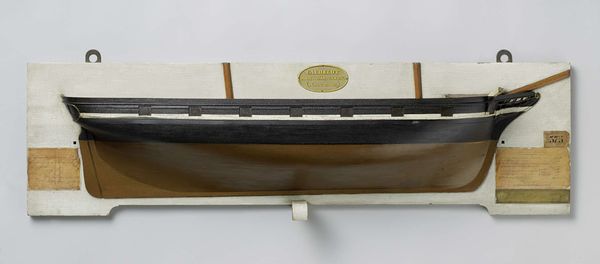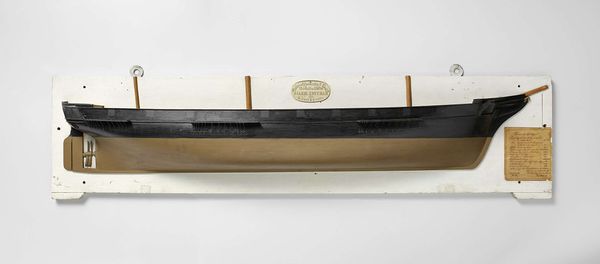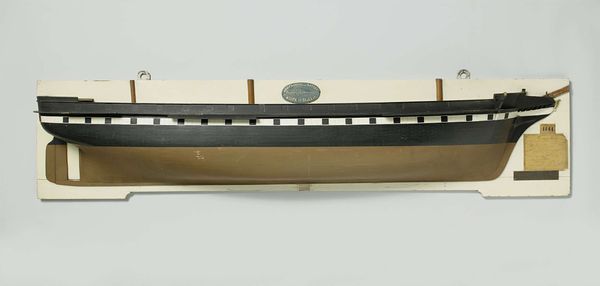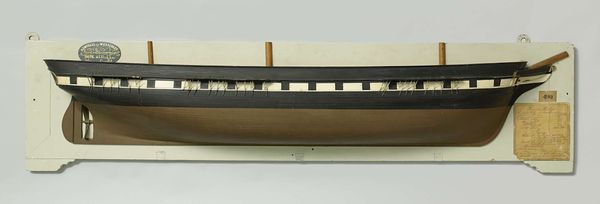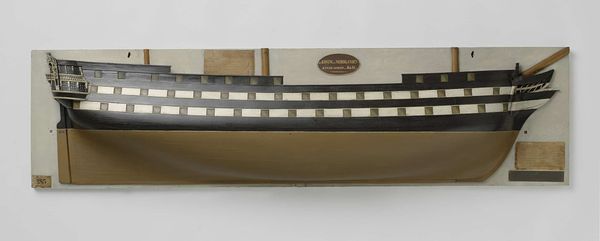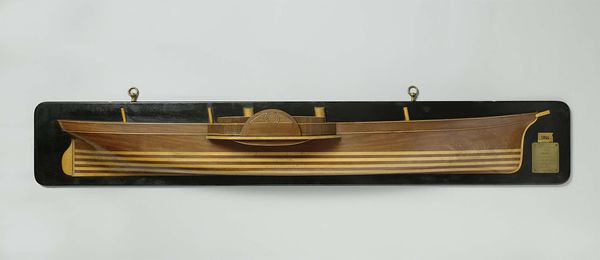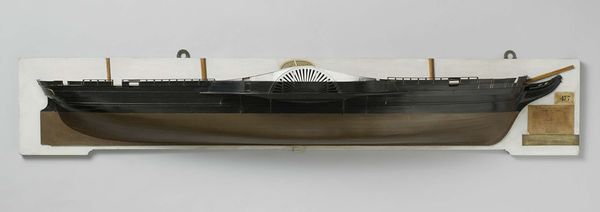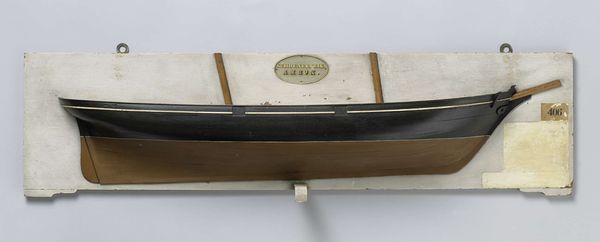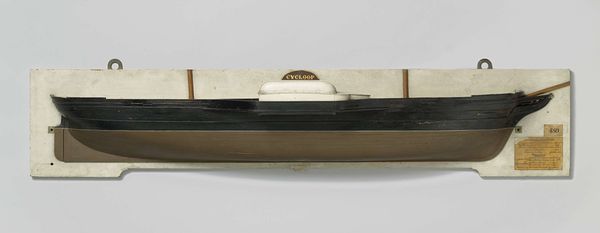
sculpture, wood
#
3d model
#
3d printed part
#
3d printing
#
plastic material rendering
#
virtual 3d design
#
product design photgrpaphy
#
3d shape
#
prop product design
#
sculpture
#
3d modeling
#
wood
#
cut-out
Dimensions: height 36 cm, width 130.8 cm, depth 13.6 cm
Copyright: Rijks Museum: Open Domain
Curator: Here we have a “Half Model of a 28-Gun Frigate,” crafted in 1839 by the Rijkswerf Amsterdam. It is fashioned from wood. What's your initial reaction to this piece? Editor: My first thought is that it seems simultaneously powerful and constrained. The ship represents strength, adventure, the open sea, yet it's presented as a static object, almost like a specimen pinned to a board. It evokes a longing for journeys beyond reach. Curator: That tension speaks to the function of these half models. They weren’t intended as artworks per se, but as tools for shipbuilders. This allowed them to visualize the ship's design and hull shape, streamlining the construction process within the Rijkswerf, which was deeply implicated in the Dutch colonial projects. So, it is power—power manifest through shipbuilding technologies, not simply power signified through imagery. Editor: That's fascinating! It explains the level of detail, the careful carving, and what seems to be its precision. But it's not merely technical. I still read the symbols inherent to a ship of this era—maritime exploration, colonial enterprise. There’s something imposing about the way this dark frigate emerges from a flat background. There’s also, given its static presentation, an evocation of dreams of ship building which also carried within it its own dreams of colonization, trade, or conquest. Curator: And these symbols shifted depending on the broader political and social context. By 1839, the Dutch colonial project in Indonesia was consolidating. How does knowing the historical context shift the emotional weight of the object for you? Editor: It complicates it. While the ship retains its potent symbolism of ambition and discovery, that's tempered by the historical realities—colonial expansion, exploitation. Its polished form now carries this layer of historical culpability too. A beautiful object can mask a darker truth and yet become inseparable. Curator: Precisely, and that interplay is precisely what makes it such a compelling and historically freighted artifact. The model's physical presence as an object connected with ship-building provides insights to the evolution of industrial design, especially for such large-scale products as ships. Editor: I concur, what’s particularly insightful is recognizing how such objects aren't isolated artistic statements, but material traces embedded within much wider cultural narratives, political conflicts and power dynamics. Curator: Agreed, understanding it is much like navigating the seas it was built to cross. Editor: That's quite the image! This experience definitely made me consider colonial ship-building in new depths.
Comments
No comments
Be the first to comment and join the conversation on the ultimate creative platform.
